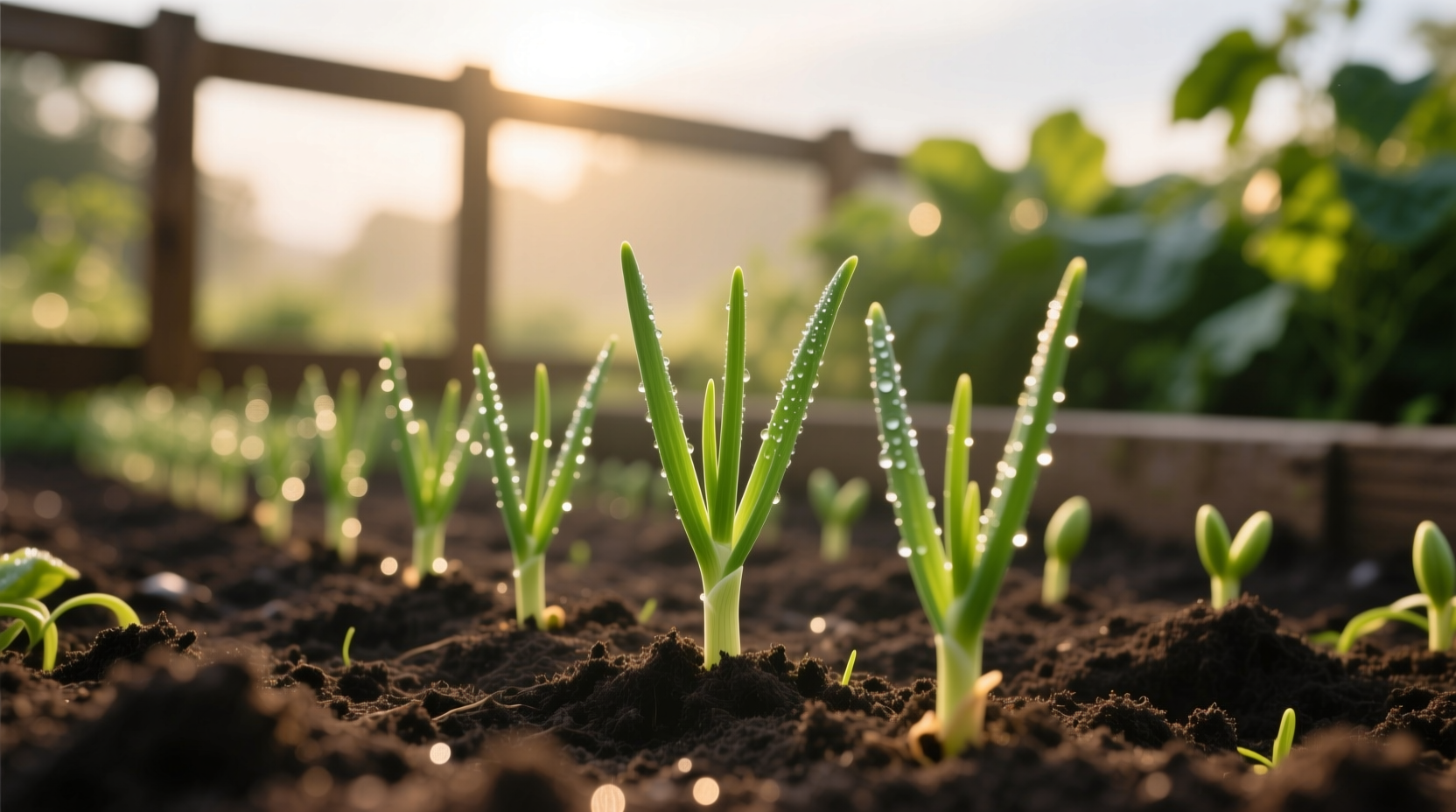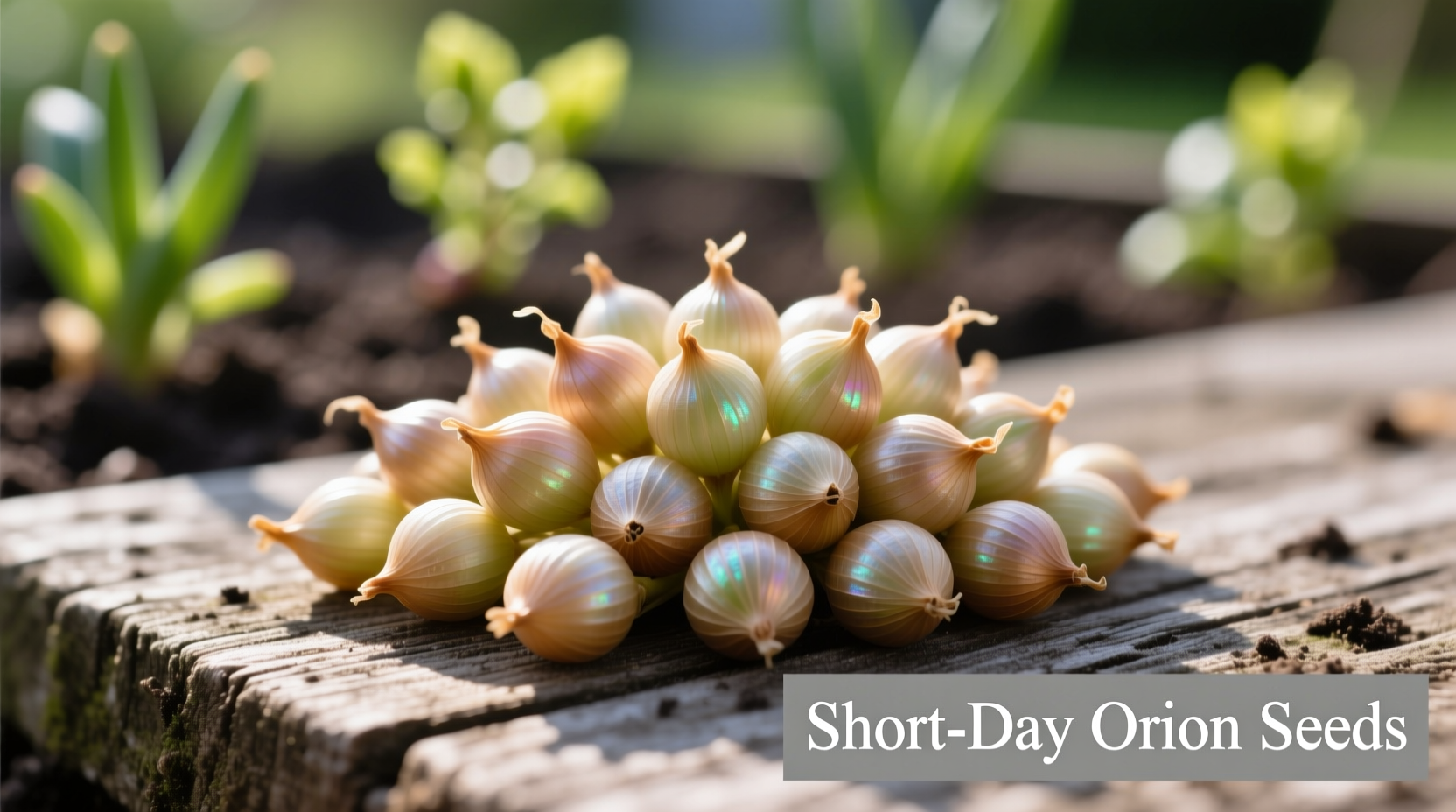As a gardener in warmer climates, you've likely struggled with onions that won't bulb properly. The secret lies in selecting the right onion type for your region. Short day onion seeds solve this problem by responding to the shorter daylight hours typical of southern latitudes, ensuring reliable bulb formation where other varieties fail.
Why Short Day Onions Work in Warm Climates
Unlike long day varieties that require 14-16 hours of daylight to form bulbs, short day onions initiate bulb development with just 10-12 hours of sunlight. This biological adaptation makes them perfect for regions below 35° latitude where summer days don't reach the extended lengths needed by long day varieties.
According to the USDA Agricultural Research Service, short day onions typically contain 4-6% sugar content, significantly higher than long day varieties, giving them their characteristic sweet flavor profile that's perfect for fresh consumption.
| Onion Type | Day Length Trigger | Best Planting Zone | Harvest Time | Sugar Content |
|---|---|---|---|---|
| Short Day | 10-12 hours | Zones 7-10 | April-May | 4-6% |
| Intermediate Day | 12-14 hours | Zones 5-7 | May-June | 3-5% |
| Long Day | 14-16 hours | Zones 2-5 | July-August | 2-4% |
Optimal Planting Schedule for Short Day Varieties
Timing is critical when planting short day onion seeds. In southern regions, plant seeds between October and February, depending on your specific location:
- Deep South (Zones 9-10): October-November planting
- Mid-South (Zones 7-8): December-January planting
- Transition Zones (6b-7a): February planting
Plant seeds ¼ inch deep in well-prepared soil with pH between 6.0-6.8. Maintain consistent moisture during germination, which typically occurs within 7-14 days. Thin seedlings to 4-6 inches apart once they reach 4 inches tall to allow proper bulb development.
Top Short Day Onion Varieties for Home Gardeners
Not all short day varieties perform equally well. Based on University of Florida extension trials, these varieties consistently deliver excellent results:
- Yellow Granex - The classic Vidalia-type onion with exceptional sweetness
- Texas Super Sweet - Large bulbs with mild flavor, excellent storage (2-3 months)
- Red Creole - Deep red color, strong flavor perfect for cooking
- White Bermuda - Traditional white variety with crisp texture

Avoiding Common Short Day Onion Growing Mistakes
Gardeners often make these critical errors when growing short day varieties:
- Planting too late - In southern regions, planting after February often results in poor bulb formation
- Over-fertilizing with nitrogen - Excess nitrogen promotes leaf growth at the expense of bulb development
- Ignoring soil preparation - Onions require loose, well-drained soil; compacted soil produces misshapen bulbs
- Watering inconsistently - Fluctuating moisture levels cause splitting and disease
For optimal results, apply a balanced fertilizer when plants reach 6 inches tall, then switch to a low-nitrogen, high-phosphorus formula as bulbs begin forming. Reduce watering 2-3 weeks before harvest to improve storage quality.
Harvesting and Storing Your Short Day Onions
Harvest short day onions when approximately 50% of the tops have fallen over naturally. Carefully dig them up and cure in a warm, dry, well-ventilated area for 2-3 weeks. Unlike long day varieties that store for 6-8 months, short day onions have higher moisture content and typically store for just 2-3 months under ideal conditions (32-40°F with 65-70% humidity).
For best flavor development, allow onions to cure until the necks are completely dry and the outer skins become crisp. Store in mesh bags or crates that allow air circulation. Check stored onions regularly and remove any showing signs of decay.
Short Day vs. Long Day Onions: Climate Considerations
The primary difference between short day and long day onions isn't just the day length trigger—it's their adaptation to regional climates. Short day varieties have evolved to complete their growth cycle before the intense summer heat arrives in southern regions. Planting long day varieties in these areas typically results in small, poorly formed bulbs because the plants never receive sufficient daylight to trigger bulbing.
According to North Carolina State University's horticulture department, gardeners in transitional zones (Zone 6-7) should consider intermediate day varieties, which respond to 12-14 hours of daylight and offer better performance than either short or long day types in these regions.











 浙公网安备
33010002000092号
浙公网安备
33010002000092号 浙B2-20120091-4
浙B2-20120091-4